Juho Lauri
Towards Quantifying the Distance between Opinions
Jan 27, 2020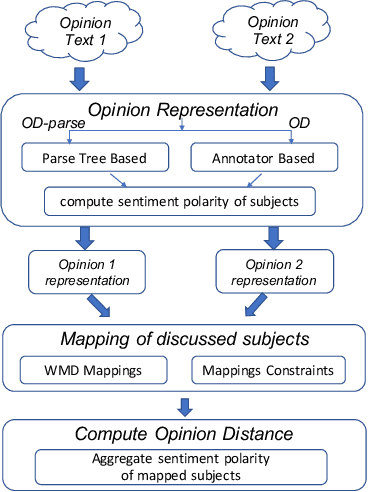


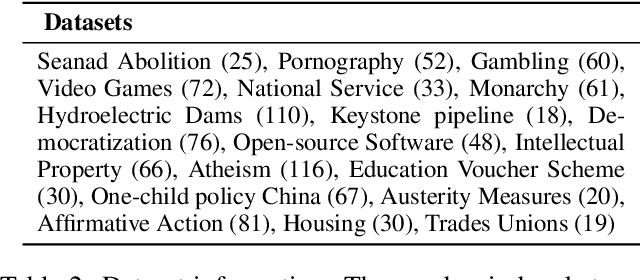
Abstract:Increasingly, critical decisions in public policy, governance, and business strategy rely on a deeper understanding of the needs and opinions of constituent members (e.g. citizens, shareholders). While it has become easier to collect a large number of opinions on a topic, there is a necessity for automated tools to help navigate the space of opinions. In such contexts understanding and quantifying the similarity between opinions is key. We find that measures based solely on text similarity or on overall sentiment often fail to effectively capture the distance between opinions. Thus, we propose a new distance measure for capturing the similarity between opinions that leverages the nuanced observation -- similar opinions express similar sentiment polarity on specific relevant entities-of-interest. Specifically, in an unsupervised setting, our distance measure achieves significantly better Adjusted Rand Index scores (up to 56x) and Silhouette coefficients (up to 21x) compared to existing approaches. Similarly, in a supervised setting, our opinion distance measure achieves considerably better accuracy (up to 20% increase) compared to extant approaches that rely on text similarity, stance similarity, and sentiment similarity
Learning fine-grained search space pruning and heuristics for combinatorial optimization
Jan 05, 2020

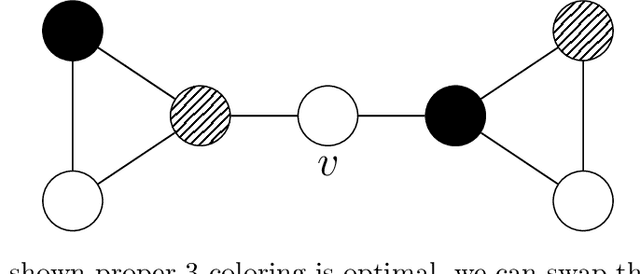
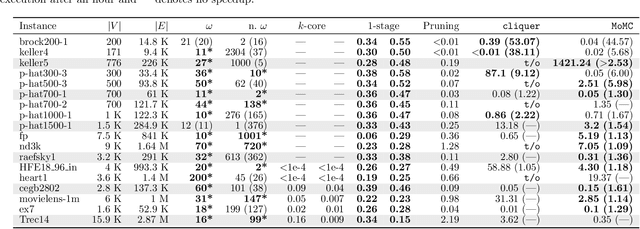
Abstract:Combinatorial optimization problems arise in a wide range of applications from diverse domains. Many of these problems are NP-hard and designing efficient heuristics for them requires considerable time and experimentation. On the other hand, the number of optimization problems in the industry continues to grow. In recent years, machine learning techniques have been explored to address this gap. We propose a framework for leveraging machine learning techniques to scale-up exact combinatorial optimization algorithms. In contrast to the existing approaches based on deep-learning, reinforcement learning and restricted Boltzmann machines that attempt to directly learn the output of the optimization problem from its input (with limited success), our framework learns the relatively simpler task of pruning the elements in order to reduce the size of the problem instances. In addition, our framework uses only interpretable learning models based on intuitive features and thus the learning process provides deeper insights into the optimization problem and the instance class, that can be used for designing better heuristics. For the classical maximum clique enumeration problem, we show that our framework can prune a large fraction of the input graph (around 99 % of nodes in case of sparse graphs) and still detect almost all of the maximum cliques. This results in several fold speedups of state-of-the-art algorithms. Furthermore, the model used in our framework highlights that the chi-squared value of neighborhood degree has a statistically significant correlation with the presence of a node in a maximum clique, particularly in dense graphs which constitute a significant challenge for modern solvers. We leverage this insight to design a novel heuristic for this problem outperforming the state-of-the-art. Our heuristic is also of independent interest for maximum clique detection and enumeration.
Learning Multi-Stage Sparsification for Maximum Clique Enumeration
Sep 12, 2019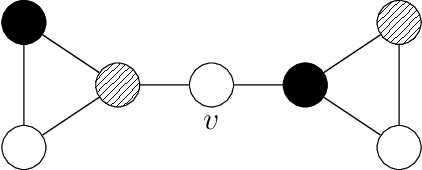

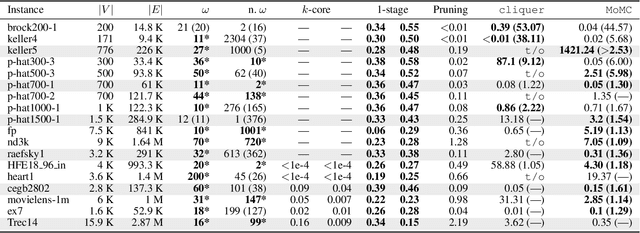
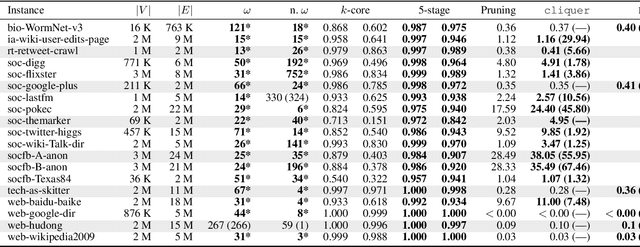
Abstract:We propose a multi-stage learning approach for pruning the search space of maximum clique enumeration, a fundamental computationally difficult problem arising in various network analysis tasks. In each stage, our approach learns the characteristics of vertices in terms of various neighborhood features and leverage them to prune the set of vertices that are likely not contained in any maximum clique. Furthermore, we demonstrate that our approach is domain independent -- the same small set of features works well on graph instances from different domain. Compared to the state-of-the-art heuristics and preprocessing strategies, the advantages of our approach are that (i) it does not require any estimate on the maximum clique size at runtime and (ii) we demonstrate it to be effective also for dense graphs. In particular, for dense graphs, we typically prune around 30 \% of the vertices resulting in speedups of up to 53 times for state-of-the-art solvers while generally preserving the size of the maximum clique (though some maximum cliques may be lost). For large real-world sparse graphs, we routinely prune over 99 \% of the vertices resulting in several tenfold speedups at best, typically with no impact on solution quality.
Fine-grained Search Space Classification for Hard Enumeration Variants of Subset Problems
Feb 22, 2019


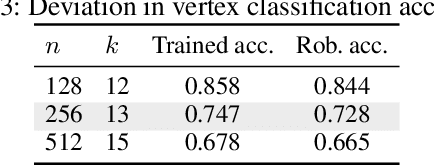
Abstract:We propose a simple, powerful, and flexible machine learning framework for (i) reducing the search space of computationally difficult enumeration variants of subset problems and (ii) augmenting existing state-of-the-art solvers with informative cues arising from the input distribution. We instantiate our framework for the problem of listing all maximum cliques in a graph, a central problem in network analysis, data mining, and computational biology. We demonstrate the practicality of our approach on real-world networks with millions of vertices and edges by not only retaining all optimal solutions, but also aggressively pruning the input instance size resulting in several fold speedups of state-of-the-art algorithms. Finally, we explore the limits of scalability and robustness of our proposed framework, suggesting that supervised learning is viable for tackling NP-hard problems in practice.
 Add to Chrome
Add to Chrome Add to Firefox
Add to Firefox Add to Edge
Add to Edge